All Booked Up in Frankfurt
Between now and then, the National Book Development Board will be preparing a large-scale exhibit of the Philippines’ literary landscape at the cost of an estimated 200 million pesos. It’s a lot of money for the domestic book market.
The book fair is Frankfurt’s pride, its Messe (the fair), which takes place in a giant complex that could likely fit the world’s entire book industry. It wasn’t packed during my first time to go there in 2022 due to the pandemic. Now it’s getting back on track.
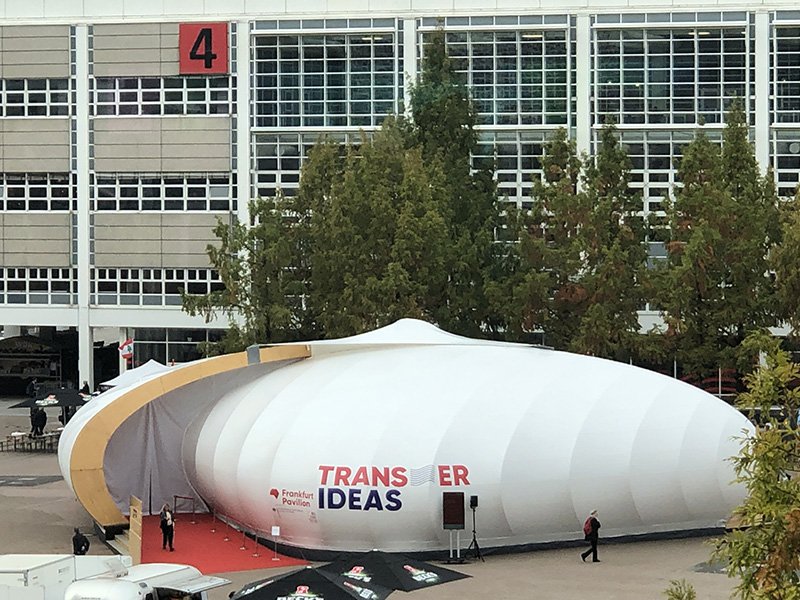
The 'pod' where the huge book talks are held at the Frankfurt Messe, the world's biggest book fair (Photo by Criselda Yabes)
The color is gray and the architecture looks staid, conventional, unilluminating, except that right in the middle of the enclave, in a space called the agora (the marketplace), a distinctively shaped pod is meant for widely attended book talks.
Being the Guest of Honor (GOH) gives one the right to splurge, to be eccentric or grandiose in revealing much of what the country has to offer. It was Spain when I was there, its exhibit filled with a play of lights, and bridged the classics and modern technology. This year Slovenia, a small country that was once part of Yugoslavia, had a simple, economical, and hushed exhibit, but I enjoyed listening to the writers from the Balkans.
I’m only hoping that when our turn comes, our exhibit won’t remind us of a sari-sari store.
When you’re busy making the rounds of the booths of all the countries for five straight days – the last two days are open to the public to buy books and meet their favorite authors – you might think there’s nothing else outside of the fairgrounds.
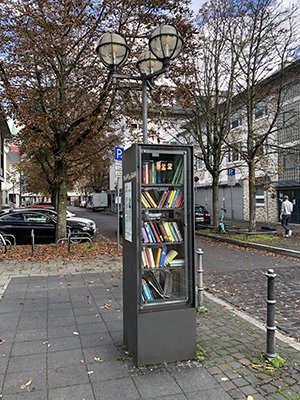
It is quite common to see book banks on the streets of Frankfurt (Photo by Criselda Yabes)
My misconception that Frankfurt is just another boring European city was shattered when I first arrived by high-speed train from Paris, which takes about four hours. The Hauptbahnhof, the central station, is a domed hangar were people from all walks of life, a mixture of ethnicities and colors, come and go.
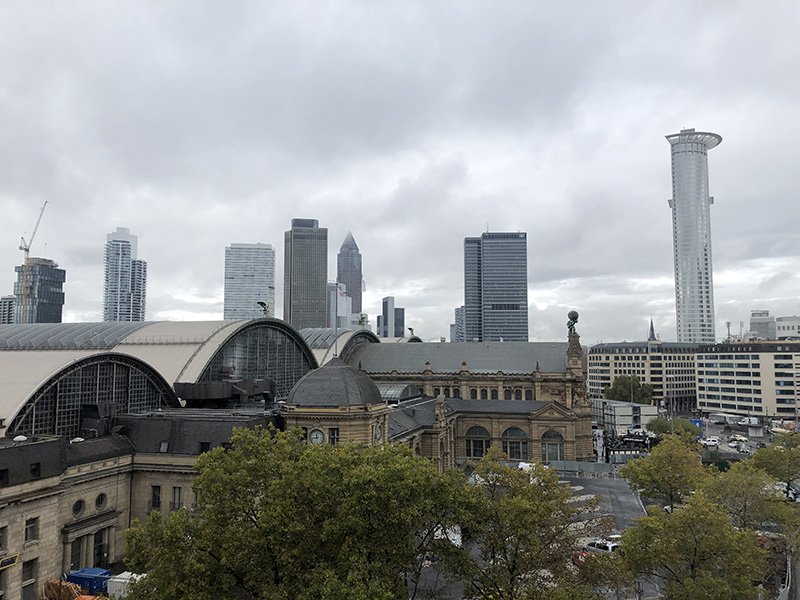
The view of Hauptbahnhof, the main train station of Frankfurt, from above (Photo by Criselda Yabes)
You would know you’re walking through a slice of modern cultures and foreign-ness, especially when you see the Asiana Airlines advertisement written across the steel roof. It’s as close to being in the transit walkways of Dubai’s airport with the world walking around you.
The edifying surprise ends there. The minute you walk out of the station, you hit the unsavory part of the city, but it’s not as bad as it seems. One street goes toward a row of drug addicts, another leads to a ghetto of the Third World (with good restaurants, mind you), and another to the red-light district, which tapers off to a calmer neighborhood.
At some point, Münchener Street leads to Willy Brandt Platz, where the blue and yellow symbol of the euro lights up at night. It’s Frankfurt’s version of the ubiquitous “I heart” red heart in nearly every city. Here it’s money that speaks, and that’s mainly because the European Central Bank is in Frankfurt.
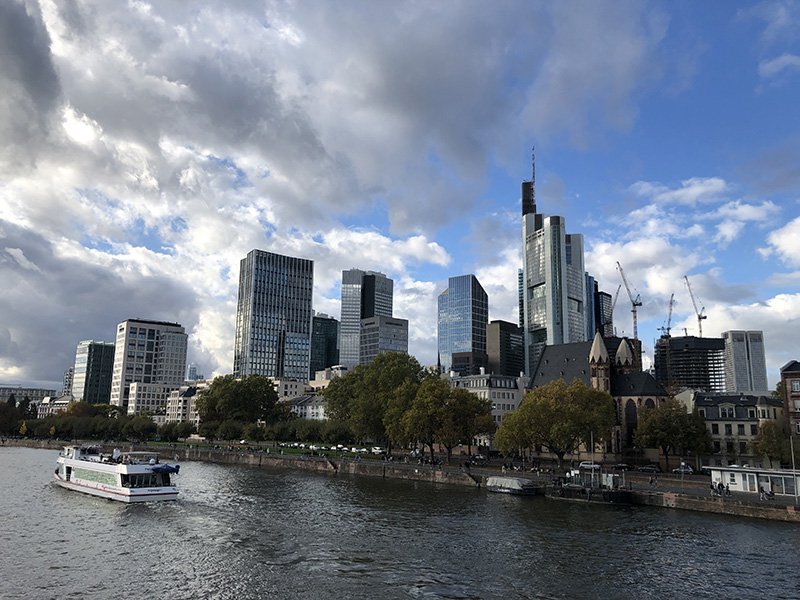
The Frankfurt skyline, the center of business and finance where the European Central Bank is located (Photo by Criselda Yabes)
Therefore, this city is no pushover. After going through the short seedy side of it, your eyes must suddenly adjust to the high-end boutiques and luxury hotels. Right across the euro sign (where tourists also do selfies) is the Opera House that is in danger of being dismantled for a classy makeover. It’s a controversy that the newfound friend I met at the fair, Felix Huck, a freelance journalist, NGO worker, and performance activist, is trying to stop.
He wants to do a protest remake of Klaus Kinski in the 1982 film, Fitzcarraldo, and yell at the top of his voice, “I want my Opera House!” He wanted to take me to the belfry of the cathedral so I could do the same in Chabacano for his video documentary.
I was drawn to the Goethe University in Frankfurt’s west end, a neighborhood of classical and art deco houses where the Philippine consulate is located. Before I even set foot in the Messe fairgrounds, it was Goethe University that awed me with its simple, lush green lawn and straight lines of ocher-colored buildings that were once the headquarters of a chemical company that supplied Hitler’s gas chambers.
It was an exceptional feat to turn it into a campus where I love to be. Classes hadn’t started yet, and Felix gave me a tour of the empty campus that included a building where the Americans holed up after the war. If you want a tour guide of Frankfurt for a day, Felix is the man.
And If you come to the grand book fair in 2025 (please do) to support our Philippine books (we hope), consider the charms of Frankfurt. It also sits by the River Main, where you can take a pleasant walk along the banks and cross the Iron Bridge after visiting Romer, the old city whose architectural façade has been renovated for the tourists.
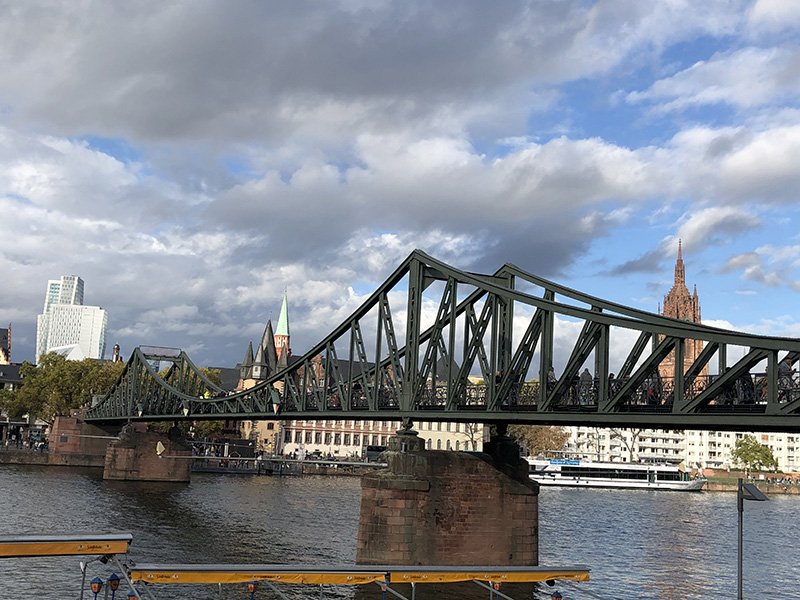
The iconic Iron Bridge, where you can have a pleasant walk to get a good view of the city (Photo by Criselda Yabes)
This could take a morning or an afternoon. From the center of Hauptwache, a common subway line, Romer and the river are not too far away on foot. On my first visit, I had foolishly mistaken the river for the Rhine because my train ride went through Strasbourg near the German border.
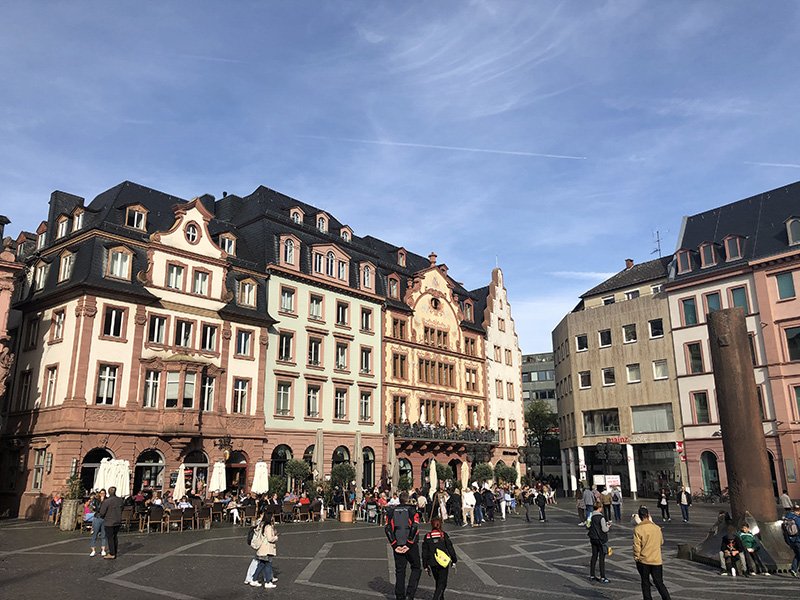
The old but now very touristic city of Romer (Photo by Criselda Yabes)
On Thursdays, Hauptwache has an open food market. We sat at a makeshift table for a brunch of kartoffelpuffer with apfelmus (a kind of a thick pancake with apple sauce) and fresh rhubarb juice that’s better than any I’ve tasted. It was a sunny day for long chats and long walks by the river, that eventually led me back to the train station, the Hauptbahnhof, which you must remember when you come to Frankfurt, because that is where it all starts.
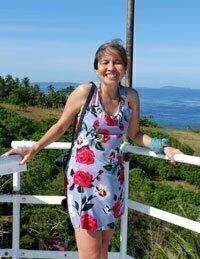
Criselda Yabes is a writer and journalist based in Manila. Her most recent books include Crying Mountain (Penguin SEA) on the 1970s rebellion in Mindanao and Broken Islands (Ateneo de Manila University Press) set in the Visayas in the aftermath of Typhoon Haiyan.
More articles from Criselda Yabes






No comments:
Post a Comment